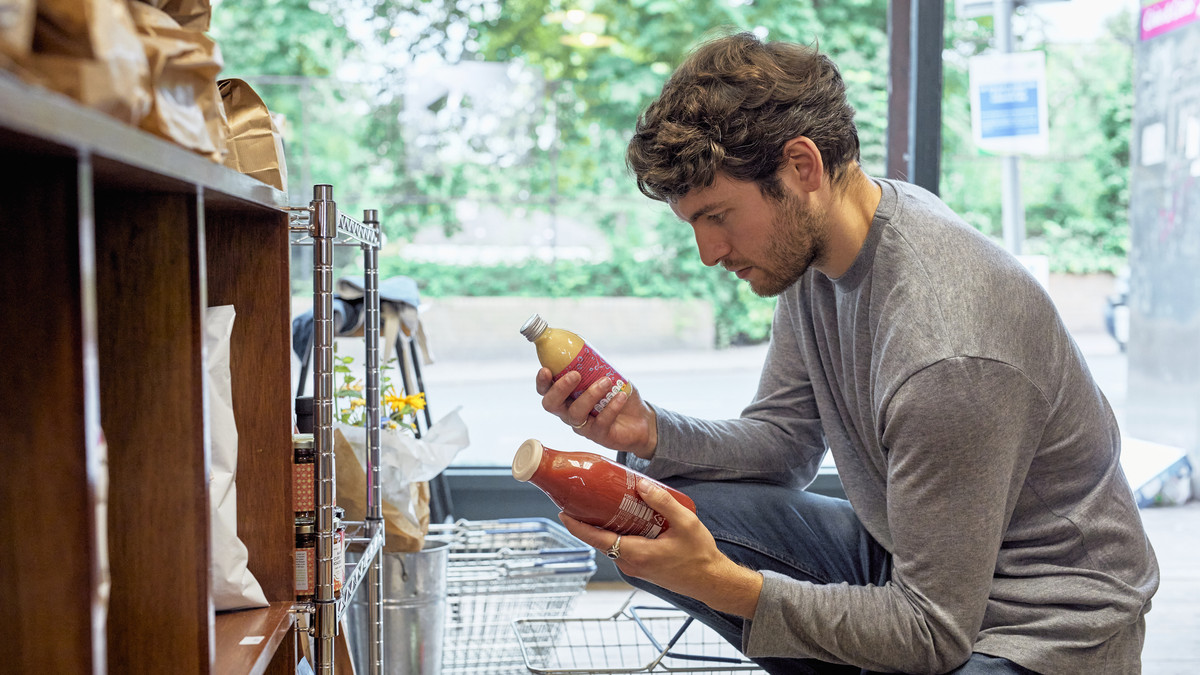Out-of-stocks and, more recently, inflation have helped fuel a boom in private brand spending in recent months.
That trend is expected to continue, with more than three-quarters (77%) of shoppers who said they bought more store brand products claiming they will continue to do so, according to a recent report from the Food Industry Association (FMI).
The juiced-up sales are happening at a time when consumers are becoming more brand agnostic and zeroing in on product attributes when they shop, said Shelley Balanko, senior vice president at The Hartman Group. Concurrently, grocers are evolving from “private label” products that are essentially cheaper versions of name brands to “private brands” that are competitive with mainstream suppliers in both cost and quality, according to FMI’s Vice President of Industry Relations Doug Baker and research from The Hartman Group.
To keep the momentum going, Baker and Balanko identified four key ways grocers are boosting their private brands.
Honing in on product attributes
Consumers are moving away from brand dependency and shifting more of their purchasing decisions to meet desired attributes, Balanko said.
Balanko said grocers are embracing more “premium attributes” like organic, non-GMO and fair trade. Functional foods and plant-based, a growing trend that has expanded from protein alternatives to categories like pasta, are both areas Baker is seeing grocers explore with their store brands.

Hy-Vee’s Good Graces private label line. Courtesy of Hy-Vee
From Amazon’s plant-based offshoot of its Fresh line to Hy-Vee’s gluten-free Good Graces brand, grocers are offering more better-for-you and health-focused options.
“People are using foods for preventative maintenance more than they ever have” as they look to live longer and avoid costly medical bills, Baker said.
Revamping brand tiers
As grocers build out their private brand assortments, they are transitioning away from focusing tiers just on price extremes of super high or very low, and instead evolving to have more price options or offer different value propositions.
Pricing tiers, especially in the middle, have become more granular, said Balanko. In recent years, retailers have turned to strategies like developing additional pricing levels or bringing more brands to each of the tiers they have, she said.
Consumers shop more by occasion and have different preferences and price elasticity across categories, Balanko said. Where customers choose to trade up with private brands can be “all over the place,” Balanko said, but noted it’s more prevalent in certain categories such as health and wellness and snacks if the premium offering has a “culinary distinction and true novelty.”
“[Having] different tiers can be very useful because consumers don’t constrain their shopping within a specific tier,” Balanko said. “So even if a consumer is shopping very closely to a budget, there are occasions and there are categories where they’re willing to buy the premium version of whatever it may be.”
Some grocers are growing specific tiers, such as premium. Last year, Kroger said it planned to add 600 items in 2021 with 60% in its Simple Truth or Private Selection lines in response to shopper desire for premium items, the Memphis Business Journal reported.
Baker noted “value” for private brands has moved away from strictly meaning price point to encompassing other factors like a brand’s sustainability, health benefits, social responsibility and more. FMI has encouraged grocers to look at aspects such as sustainability or health and well-being in addition to price across their brand tiers.
Save Mart’s private brand portfolio, for example, follows a three-tier approach: unique flavors, national brand equivalents and cost-saving options. The company’s own brands portfolio breaks into low-, mid- and premium-tier lines.

Plant-based milk under Target’s Good & Gather line. Catherine Douglas Moran/Grocery Dive
Strengthening consumer awareness of private brands
With its new marketing campaign, Save A Lot is looking to boost its private brands and also help shoppers make the connection that those products are private brands in the first place.
The discount grocer, which takes a multi-brand approach with more than 50 private brands, has found customers usually perceive its store brands as lesser-known national or regional ones. Still, the discounter wants shoppers to associate the more wallet-friendly options, in comparison to name brands, with the retailer.
In one of its new ads, the grocer aims to highlight why shoppers should pick private brands for their peanut butter and jelly products: The left-hand side shows Smuckers and Jif, while the right-hand side shows Bramley’s concord grape jelly and Nut Some’s creamy peanut butter — similar in appearance to the design of the national brands — near a yellow circle with the words “Save A Lot brands.”
“Tastes Alike. Saves A Lot,” the tagline reads.
A positive experience with a retailer can inspire more trust in private brand products, Balanko said, creating a “halo effect” for the retailer.
Fifty-two percent of surveyed shoppers said a retailer’s brands are either very important or extremely important for them when choosing where to shop, according to FMI’s latest report on private brands. For frequent private brand shoppers, that jumps to 67%.
Some retailers, however, may not want an explicit connection to their store brands, including those like Aldi or Trader Joe’s that have extensive private brand portfolios, or those concerned their multitude of pricing tiers will lead shoppers to think there’s variation in product quality, Balanko said.
Retailers generally take two main approaches to private brands, according to The Hartman Group’s Brand Ambition report: “branded house” where private label branding is closely linked to the retailer and “house of brands,” where retailers mirror national brands with a variety of private label products that have no clear tie back to them.
Rethinking packaging
Grocers have moved away from the “basic, boring box with generic writing” to liven up their private brand packaging with more personality and functionality, Balanko said, like adding plastic windows or using clear packaging to showcase what’s inside.
Some grocers are using packaging to reflect product attributes and create certain perceptions. For example, Kroger’s Simple Truth line of natural and organic foods has a simple design and green and white color scheme, while Target’s Good & Gather is “a very contemporary looking private brand that really speaks to those premium cues,” Balanko noted.
Target, especially, has embraced colorful packaging with its pastel-hued Favorite Day line and vibrantly designed Good & Gather brand. Because food shopping is a “very visual activity,” enticing packaging can help a brand stand out and play into the three main metrics behind repeat purchasing: price, looks and performance, Baker said.
Twenty percent of shoppers who have bought more private brands said they did so because the packaging “looked interesting,” while 14% said it was “appealing,” per FMI’s private brands report. Nineteen percent cited “convenient or resealable” packaging as what drew them in.
Some, like Save A Lot, are mimicking what national brands look like. “Due to our packaging, I think our customers are more willing to try us out when we’re perceived as national brand players,” Tim Schroder, Save A Lot’s chief sales and marketing officer, told Grocery Dive earlier this summer.
On the eco-friendly front, retailers can tap into consumer desire for sustainable products by using packaging to spotlight certifications, like Fair Trade, or highlight if an item is locally sourced, Baker said. Packaging serves as an “easy target” for grocers’ sustainability efforts, from reducing plastics to using recycled materials, he noted.
Southeastern Grocers, for example, earlier this year set goals for its own brand packaging, including eliminating the use of polystyrene and using an average of 30% post-consumer recycled material in the packaging.
As grocers look to boost their private brand portfolios, Baker and Balanko both stressed the importance of paying attention to what customers want to ensure their brands meet shoppers’ needs.
“A lot of shoppers don’t recognize if they are shopping private or name brands and they don’t care as long as they get the attributes they want at a price they are willing to pay,” Balanko said.
This article was written by Catherine Douglas Moran from Grocery Dive and was legally licensed through the Industry Dive Content Marketplace. Please direct all licensing questions to legal@industrydive.com.
![]()



